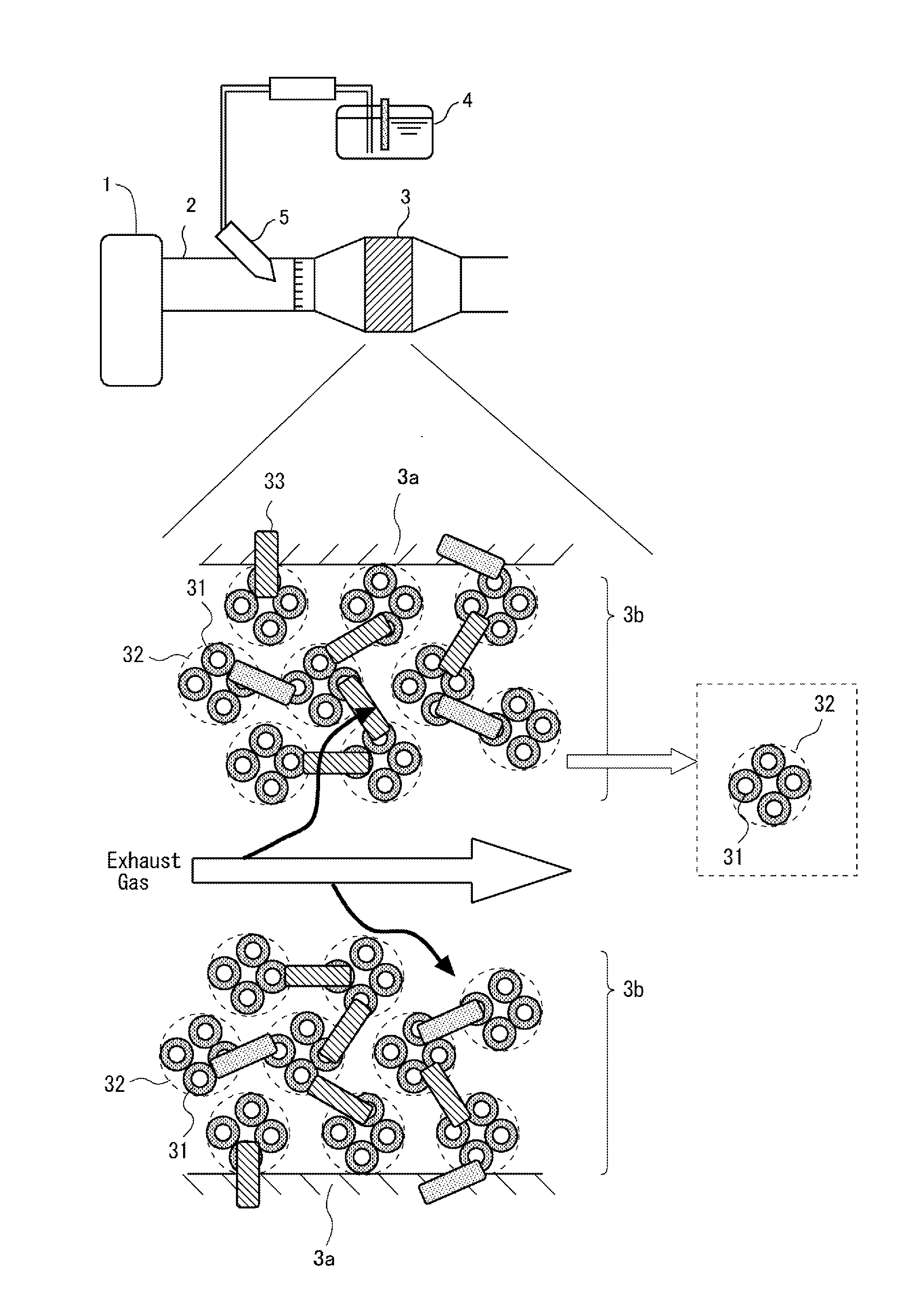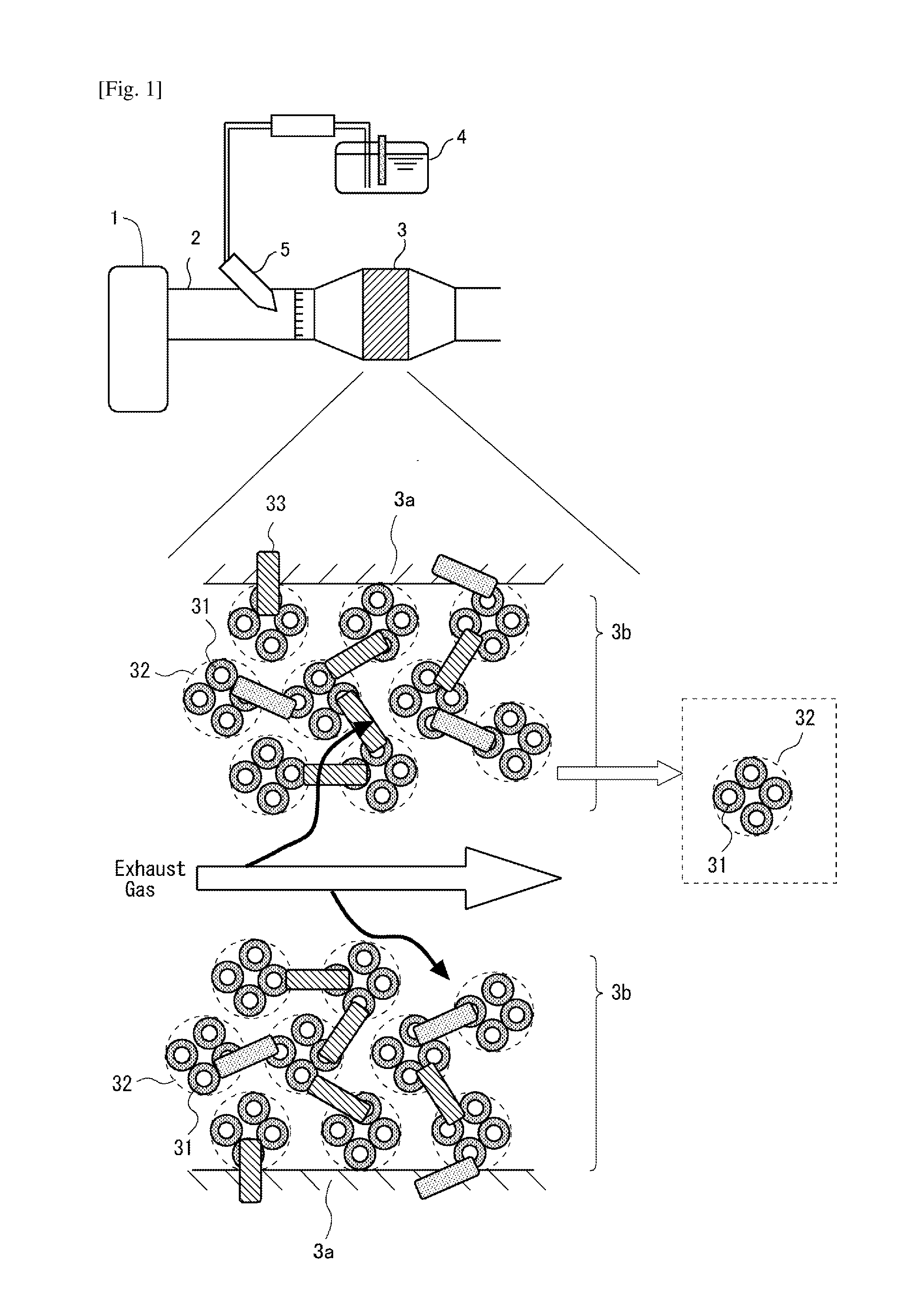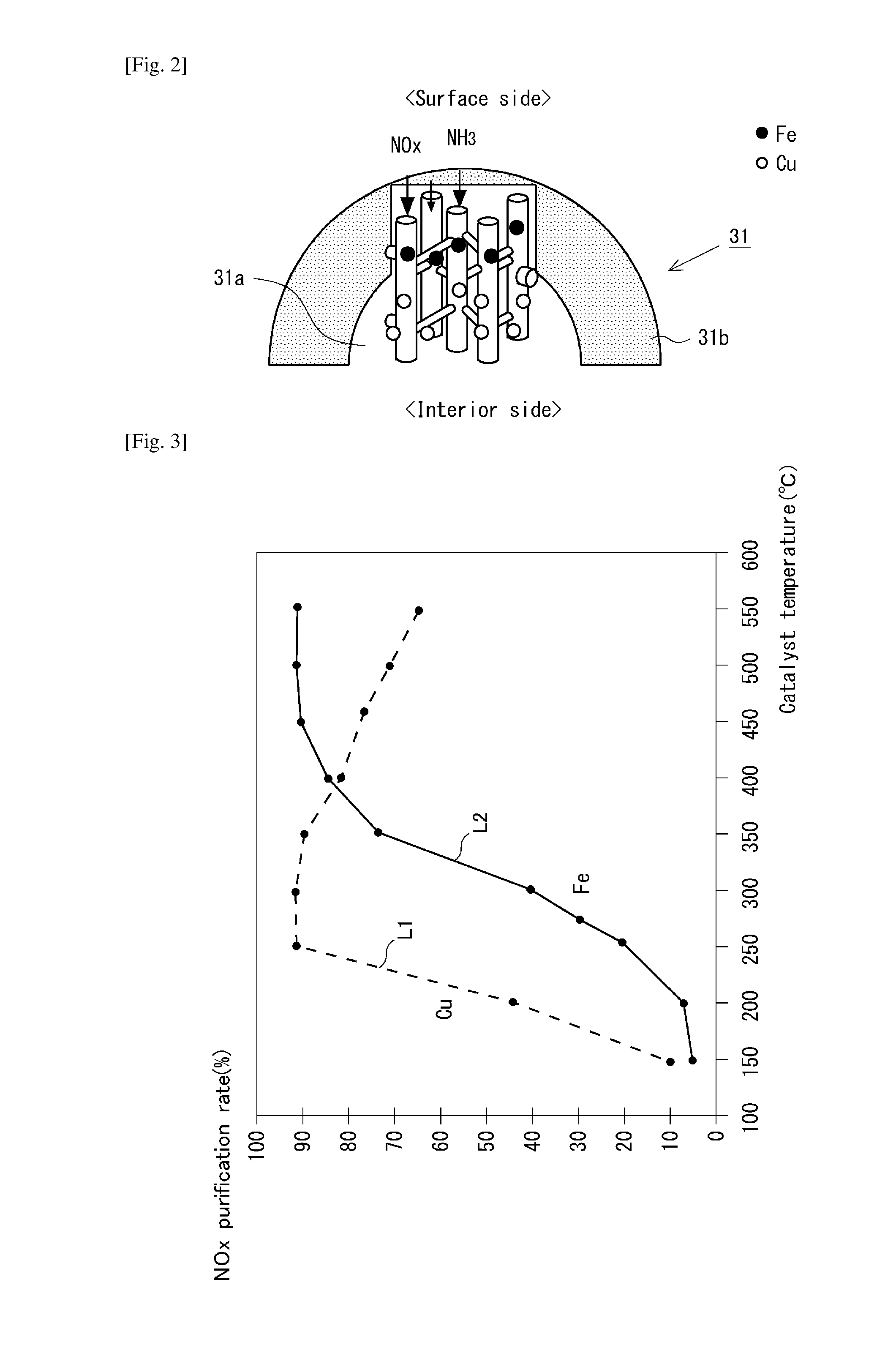SELECTIVE NOx REDUCTION CATALYST
a nox reduction and selective technology, applied in the direction of physical/chemical process catalysts, separation processes, machines/engines, etc., can solve the problems of nox purification performance reduction, difficult to obtain an acceptable nox purification performance, and inability to go, so as to achieve favorable nox purification and reduce nox purification performance , the effect of broadening the operating temperature region
- Summary
- Abstract
- Description
- Claims
- Application Information
AI Technical Summary
Benefits of technology
Problems solved by technology
Method used
Image
Examples
example 1
[0032]An example of the selective NOx reduction catalyst according to the present invention (also referred to herebelow simply as the “NOx catalyst”) will be described based on the drawings appended to this Description. FIG. 1 shows in its upper part an exhaust gas purification apparatus for an internal combustion engine 1, wherein the exhaust gas purification apparatus is equipped with the NOx catalyst 3 according to this example, and shows in its lower part a model structure for the NOx catalyst 3. The internal combustion engine 1 shown in FIG. 1 is a diesel engine for powering a vehicle. However, the internal combustion engine 1 is not limited to diesel engines and may be, for example, a gasoline engine. A description of, inter alia, the intake system and the EGR apparatus, which recirculates a portion of the exhaust gas flowing in the exhaust gas conduit 2 to the intake system, of the internal combustion engine 1 is omitted from FIG. 1.
[0033]The NOx catalyst 3, which selectively...
PUM
| Property | Measurement | Unit |
|---|---|---|
| selective reduction activity | aaaaa | aaaaa |
| temperature | aaaaa | aaaaa |
| NOx reduction activity | aaaaa | aaaaa |
Abstract
Description
Claims
Application Information
 Login to View More
Login to View More - R&D
- Intellectual Property
- Life Sciences
- Materials
- Tech Scout
- Unparalleled Data Quality
- Higher Quality Content
- 60% Fewer Hallucinations
Browse by: Latest US Patents, China's latest patents, Technical Efficacy Thesaurus, Application Domain, Technology Topic, Popular Technical Reports.
© 2025 PatSnap. All rights reserved.Legal|Privacy policy|Modern Slavery Act Transparency Statement|Sitemap|About US| Contact US: help@patsnap.com



